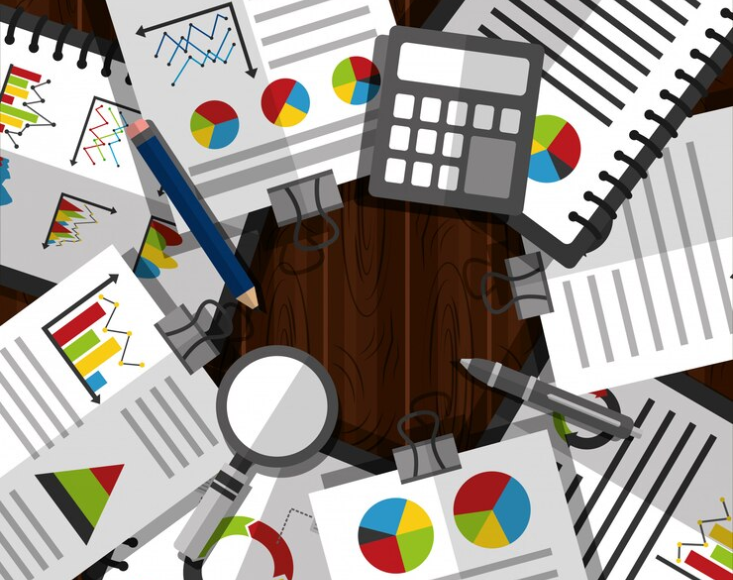What Is a Chart of Accounts?
A chart of accounts is a vital accounting tool for small businesses, organizing the key accounts that make up your company’s financial documentation. This essential document compiles all financial information related to your business in a single location, providing a transparent overview of your company’s financial status.
Just as a chart of accounts offers clarity, an accounting template can similarly provide an immediate view of your business’s financial details. Utilizing such accounting tools ensures a more streamlined workflow, aiding in the growth and efficiency of your company.
How a Chart of Accounts Functions
A Chart of Accounts (COA) acts as an organized directory of the various financial accounts present in your company’s general ledger. These accounts are categorized into sections such as revenue, liabilities, assets, and expenses. Initially, balance sheet accounts like assets, liabilities, and shareholders’ equity are listed, followed by income statement accounts such as revenue and expenses in the order they appear on your financial statements.
You might also find it useful to break down your COA by product line, company division, or business function, based on your specific needs. Examining the COA allows you to assess whether all facets of your business are operating efficiently. Maintaining a consistent COA format over time simplifies the comparison of financial data across multiple years, serving as an informational financial health report beneficial to business owners, investors, and shareholders alike.
What Is a Chart of Accounts Used For?
Small businesses utilize the Chart of Accounts (COA) to systematically arrange all the financial details of their company in an easily accessible format. This is a crucial first step in establishing your business’s accounting system. The COA distinctly separates your income, expenses, assets, and liabilities, providing a comprehensive overview of your company’s financial health.
The COA organizes your finances into specific numbered account types. Most businesses adhere to a standardized account numbering system as follows:
- 1000 – 1900: Assets
- 2000 – 2900: Liabilities
- 3000 – 3900: Equity
- 4000 – 4900: Revenue
- 5000 – 5900: Expenses
While it is not mandatory to follow this format, many businesses do so because it simplifies the process for accountants or bookkeepers to translate the information into conventional financial reports. If you have experience with maintaining a general ledger, you will notice that the accounts in the ledger correspond to those in the COA. Keeping your financial records organized can be straightforward. Many small businesses choose to use online bookkeeping services not only for invoicing and expense tracking but also for organizing accounts and ensuring smooth operations during tax time.
5 Major Types of Chart of Accounts
The five principal account categories create the framework for your chart of accounts, organizing it into distinct classifications of financial data. Several key financial statements are structured around these same five account categories. Here are the five primary account types you should include in your chart of accounts:
Assets
Assets are the resources possessed by your business that can be turned into cash and thus have financial value. Instances of assets include your accounts receivable, loan receivables, and tangible assets such as vehicles, properties, and equipment.
Liabilities
Liabilities encompass all obligations your company owes to external parties. This includes accounts payable, taxes due to the government, or loans that need to be paid back.
Equity
Equity’s function within the COA varies depending on whether your business is structured as a sole proprietorship, LLC, or corporation. This category includes Owner’s Equity or Shareholder’s Equity, based on your business’s structure. The fundamental formula for determining equity is a company’s assets minus its liabilities.
Revenue
Revenue represents the income your business generates from selling products or providing services to clients.
Expenses
Expenses are the costs incurred during the operation of your business. These include expenses like office rent, utility bills, and office supplies.
Why Is a Chart of Accounts Important?
A chart of accounts helps you streamline your business’s intricate financial data, distilling it into coherent and manageable account categories. It serves as the structural basis for all crucial financial reports of your business. Beyond organization, a COA offers significant insights into the financial health of your business by presenting a clear view of how individual accounts interconnect. Here are several advantages of using a chart of accounts:
Understand Your Earnings
The chart of accounts provides detailed insights into your revenue streams, beyond just the total amount earned. It highlights fluctuations in income, available cash flow, and how long your funds will last considering your average monthly expenses.
Get a Grip on Debts
Your COA delivers a transparent picture of your financial obligations, including both short-term and long-term debts. It helps in determining how much of your monthly revenue can be allocated toward debt repayment and assists in creating long-term debt management plans.
Spend Smarter
Though it might be tough to see a detailed list of your expenses, the chart of accounts offers a crucial perspective on your spending patterns. It allows you to track essential recurring expenses like rent and utilities, and also evaluate other expenditures to identify potential areas where you can trim costs.
Improve Your Reporting
By organizing your finances into a well-structured system of numbered accounts, an accurate chart of accounts simplifies the process of generating comprehensive financial reports. This aids you or your accountant in understanding your company’s financial standing, including cash flow statements, balance sheets, and income statements. You can customize your COA to fit the specific requirements of your business.
File Taxes
An efficiently organized chart of accounts makes tax time easier. The COA tracks all your business’s income and expenses, providing the necessary details needed for your annual income tax return.
